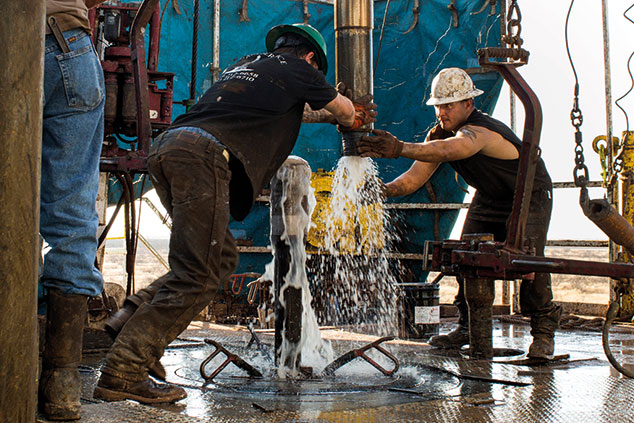
When Opec, the oil exporters’ cartel, met last May, its oil ministers said they thought $50 a barrel was a fair price for oil. That number had risen to $70 in December. Now that this threshold has been eclipsed, with Brent futures at a three-year high of $75 this week, “the target appears to have moved mysteriously upwards again”, says Julian Lee on Bloomberg Gadfly.
Saudi Arabia, the key producer, has indicated that it is happy with prices above $80, or even $100. That has brought out the bulls, who have already been impressed by the success of the pact between Opec and Russia to cut production to bolster prices and hence revenue. The oil glut has “been all but eliminated” in the past year, says Fidelity’s Tom Stevenson in The Daily Telegraph. Opec and Russia look likely to extend the production-cut pact into 2019.
The end of the glut
The surplus over the long-term average of oil and refined products in the developed world has declined from 340 million barrels to just ten million. The crisis in Venezuela has reduced oil output there to a 30-year low. US sabre-rattling over Iran could lead to more sanctions, reducing the country’s output.
The oil-price rise is also due to strong demand amid increasingly robust global growth. In the first three months of 2018 oil demand should have reached more than 2.5 million barrels per day (mbpd), estimates Goldman Sachs – the strongest year-on-year growth since 2010. In March, China’s oil imports were the second-highest on record. American demand for petrol hasn’t been this strong since 2007.
If Saudi Arabia and Opec are seriously contemplating propelling prices to around $100, they should think again, says Lee. A decade ago, Opec’s then-general secretary said that high oil prices increased revenue in the short term, but had the potential “to destroy everything” by curbing global oil demand.
Opec drove oil up to more than $140 a barrel in 2008, and it was one of the factors that contributed to the global collapse. In 1973 Opec’s oil embargo during the Arab-Israeli war led to a slide in global growth and helped usher in almost a decade of high inflation.
The global economy would not cope with $100 oil, reckons Stevenson. And it’s not just a question of denting consumer demand. “Oil-fuelled inflation” on top of solid US growth implies faster interest-rate rises than markets have factored in, bringing the upswing to an end.
Not this time
It shouldn’t come to that, says Roger Bootle of the Capital Economics consultancy in The Daily Telegraph. “The US shale revolution is a game-changer.” US supply will keep rising in response to the latest price spike, as has been the case over the past few years. US shale producers, who barely existed ten years ago, have become increasingly efficient and profitable above $60 or so. “I doubt whether we will again see oil prices holding above $100 a barrel. If I am right, for the world economy, this would be decidedly good news.”